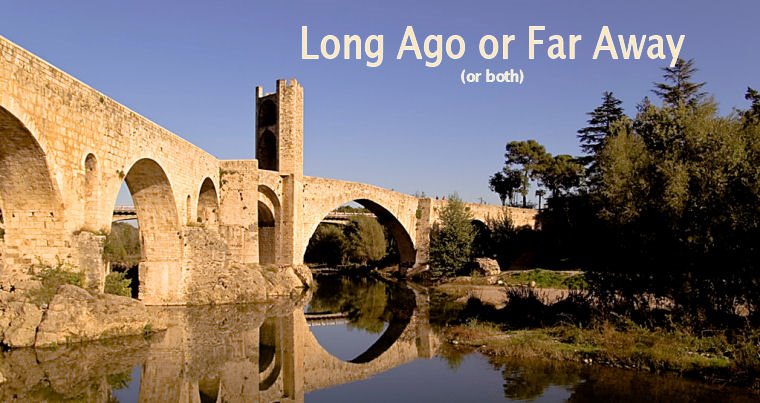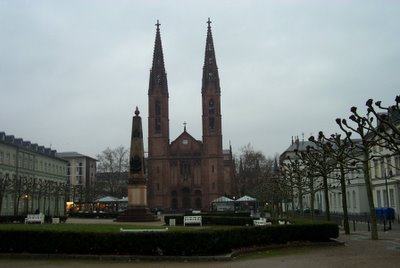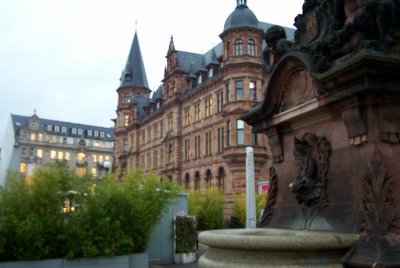 People from Brittany (the big tip of France, pointing into the Atlantic Ocean) are called Bretons and wear traditional costumes for things like religious processions. The costumes are colorful and the women wear fancy, lacy hats that are different for each part of Brittany. (Here on the left are a lot of pictures of the women wearing their hats - click on this poster to find a really neat site about the Bretons - I really like the pictures.)
People from Brittany (the big tip of France, pointing into the Atlantic Ocean) are called Bretons and wear traditional costumes for things like religious processions. The costumes are colorful and the women wear fancy, lacy hats that are different for each part of Brittany. (Here on the left are a lot of pictures of the women wearing their hats - click on this poster to find a really neat site about the Bretons - I really like the pictures.)France had a lot of damage done to it in both World Wars. Here is a site about damage to Cathedrals during World War I (not just French ones) Vintage Photographs of Cathedrals and Churches from World War I The Cathedral at Rheims, in particular (north east of Paris, in the province of Champagne) , was destroyed by the Germans in 1914. Here is a 1937 TIME magazine article about its restoration. (Rheims is where the kings of France were once crowned and it comes up in the story of Joan of Arc.)
My mom just read me a book called Pasteur's Fight Against Microbes (by Beverly Birch) about Louis Pasteur, who lived in Paris. Pasteur came up with the process of pasteurization (for example, heating up milk before selling it kills germs) and the concept of vaccinations. Here is a brief bio of his life. He was devoted to the Rosary and there is a funny story about that here.





